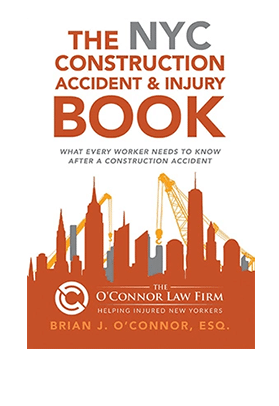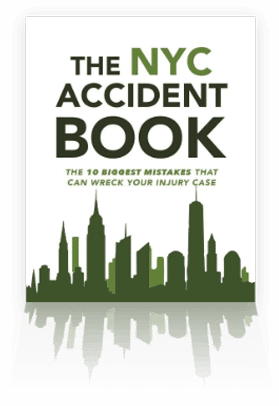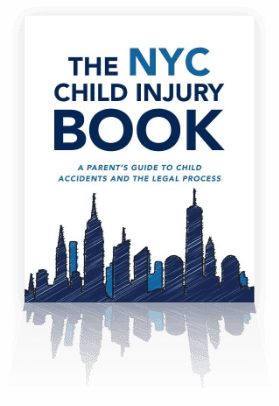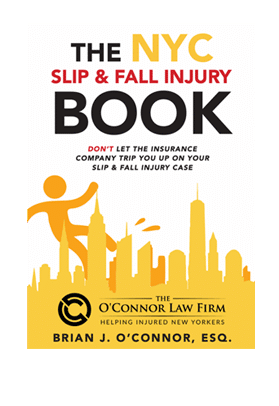Labor Law 200: Duty to Provide a Safe Workplace in New York
Construction is a dangerous job. According to the Bureau of Labor Statistics, the construction industry is second only to the transportation industry in terms of accidents and injuries. Indeed, thousands of construction workers are seriously injured on the job each year.
New York is different from other states when it comes to construction worker safety. We have a Labor Law which provides injured workers with powerful rights after an accident. In most states, injured workers can get workers’ compensation and that’s it—they can’t sue their employer for creating a dangerous work environment.
New York Labor Law, however, provides that owners, contractors and their agents can be held responsible for a worker’s injuries. Contact O’Connor Injury Law today to discuss whether you can sue for a workplace injury.
Duty to Provide a Safe Workplace
Put simply, Labor Law § 200 codifies the common law duty imposed on general contractors and owners to provide a safe workplace. The law says that workplaces must be arranged, equipped, and operated to be as safe as possible for workers and visitors. Areas of focus include:
- Equipment. Machinery must be placed to minimize injury and operated using safe practices. Equipment should also have safety guards. When the safety commissioner posts notice of a problem on a piece of equipment, workers cannot use it until it is fixed.
- Lighting. All work areas must have sufficient light so that they won’t trip or fall. Machinery must also have adequate light.
- Sanitation. Workers should be provided with safe restrooms. First aid should also be available.
- Elevation. All regulations should be followed for the safe installation and operation of elevators and escalators.
- Radiation and fire. Job sites should have radiation detection and fire suppression systems in place.
- Exits. There should be a minimum number of exits for workers who need to quickly evacuate a jobsite. Sufficient exits help reduce injury when it comes to fires and building collapse.
If you were hurt due to a violation of this section, you can likely bring a lawsuit. This lawsuit is in addition to any workers’ compensation benefits you might receive for being injured while on the job.
Two Types of Claims Under Section 200
There are two broad categories of personal injury claims construction workers can bring under section 200: (1) claims based on dangerous conditions or (2) claims based on the manner and method of doing work.
Injuries Caused by Dangerous Conditions
You might be able to bring a lawsuit under section 200 if you are injured by a defect or dangerous condition at the jobsite. You can sue the property owner or the contractor if:
- They created the dangerous condition or defect, or
- They had actual or constructive notice of the defect or dangerous condition but did not remedy it.
A defendant has “constructive notice” when they could have uncovered the defect by reasonable diligence. For example, a beam might have been rotting, and a general contractor would have seen it had he inspected the property.
However, an owner or general contractor usually does not have liability if the alleged dangerous condition was open and obvious and not inherently dangerous. For example, if a worker, while pouring a concrete floor, trips and falls over a protruding drain pipe that was covered with a bucket to prevent concrete from entering, the owner and contractor will have no liability.
Likewise, a worker cannot sue under Labor Law 200 for injuries caused by a dangerous condition if the worker is injured while attempting to correct the very same condition which caused the injury. For example, a worker who falls down stairs while attempting to fix those very same stairs, there is no violation of section 200.
Injuries Caused by the Manner or Method of Work
Sometimes, an injury is caused by the manner and method of performing the job—not by a pre-existing defect on the property.
A worker may bring a claim under Labor law 200 against an owner or contractor if injuries are caused by the manner in which the work is performed. However, a worker must prove that the owner or contractor exercised the authority to supervise or control the performance of the work which caused the injury. It’s not enough for them to have the general authority to supervise the progress of the work.
Single Family Homeowner Liability Under Section 200
Those who own single-family homes are often exempted from liability in other sections of the Labor Law, such as sections 240(1) or 241(6). Under those provisions, the owner of a single-family home cannot be liable unless they directed or controlled the work performed.
However, this exception doesn’t apply to section 200 claims based on dangerous conditions. For example, a single-family homeowner may be responsible for your injuries if:
- You fell through a rotted roof while trying to shingle it, if the owner knew the roof was rotted or should have discovered it.
- You slipped and fell on snow or ice the property owner should have known about.
- The owner provided a rickety ladder to use, which collapses underneath you.
Damages for a Section 200 Claim
We pursue the full range of damages for our clients. We can seek compensation for:
- Medical care to treat your injuries. Care includes the cost of surgery, rehabilitation, diagnostic tests, physical therapy, psychological counseling, prescription drugs, doctor appointments, and assistive devices.
- Lost wages if your injury prevented you from returning to work.
- Pain and suffering. Your injuries probably cause intense suffering, including physical pain. You deserve compensation for this.
- Emotional distress or mental anguish. Some victims relive the accident over and over, or they suffer depression. Other emotional distress includes embarrassment, irritability, and withdrawal from family or friends.
The compensation you receive in a section 200 lawsuit is in addition to any workers’ compensation benefits you receive. Typically, workers’ comp only pays two-thirds of your weekly wage as a disability benefit. Bringing a section 200 claim is a good way to fully compensate yourself when the owner or general contractor fails to provide a reasonably safe workplace.
Your Comparative Negligence Matters
A section 200 claim is one for negligence. You allege the owner or general contractor did not exercise reasonable care in providing a safe work environment. Safety lapses are examples of negligence, as is allowing a dangerous condition to exist without being fixed.
However, your own negligence matters in New York personal injury lawsuits, and that is true for section 200 claims. You might have been careless in walking through a jobsite, or you chose not to wear protective equipment. In these situations, you may be partially to blame for your own injury.
One strategy contractors use to defend against these claims is to amplify any negligence on your part. If successful, they can reduce the amount of compensation you take home. In some cases, they might be able to prevent you from receiving any compensation at all. Consult an attorney.
O’Connor Injury Law Can Help
Our legal team relies on deep knowledge of New York’s Labor Law, including section 200. We ensure that our clients receive fair treatment through the entire process.
We can:
- Gather evidence for you, such as visiting the jobsite and taking pictures or interviewing coworkers who can highlight what happened.
- Document your economic and non-economic losses.
- Guide you through the workers’ compensation claims process, including meeting all deadlines.
- Determine whether you have a valid Section 200 claim and against whom.
- Analyze liability of all possible parties, including site owners, general contractors, and their agents.
The weeks following an accident are hectic enough. We can remove stress and strengthen your claim for compensation at the same time.
Contact Us to Learn More
Brian J. O’Connor has sued some of the largest contractors in New York City. He takes pride in representing injured construction workers and believes that this is an important way of making the profession safer. When dangerous contractors have to pay compensation, they have an incentive for making their jobs less dangerous.
If you need legal help, please call O’Connor Injury Law today. We offer free consultations to those hurt on the job.




